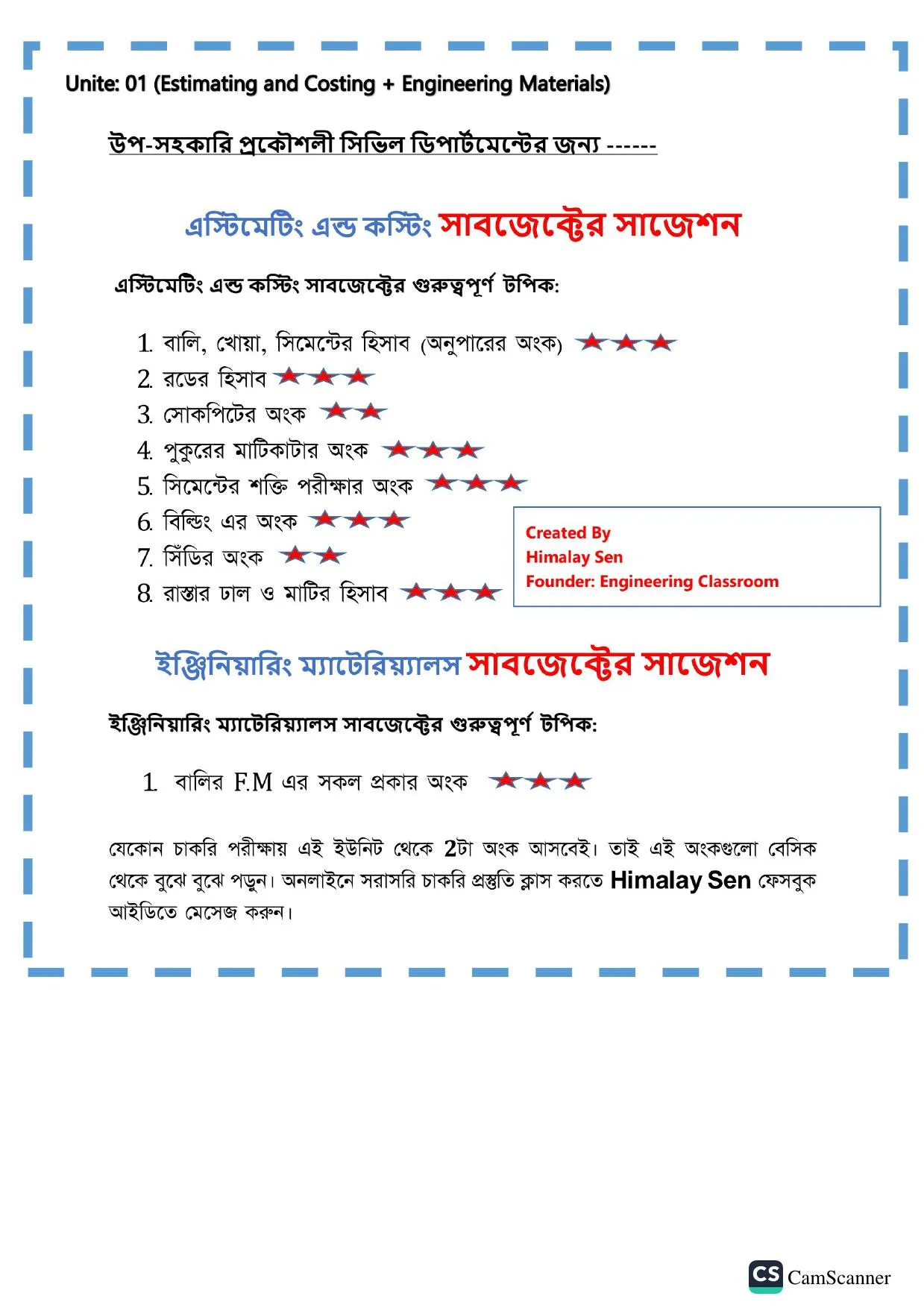MCQ
1641. Angle of friction is the-
angle between normal reaction and the resultant of normal reaction and the limiting friction
ratio of limiting friction and normal reaction
the ratio of minimum friction force to the friction force acting when the body is just about to move
the ratio of minimum friction force to friction force acting when the body is in motion
1642. Limiting force of friction is the-
tangent of angle between normal reaction and the resultant of normal reaction and limiting friction
ratio of limiting friction and normal reaction
the friction force acting when the body is just about to move
the friction force acting when the body is in motion
1643. The angle of inclination of the plane at which the body beings to move down the plane is called-
angle of friction
angle of repose
angle of projection
gone of those
1644. A block sliding down an inclined plane has acceleration - acceleration due to gravity.
less than
greater than
same as
none of the above
1645. The coefficient of friction depends on
area of contact
shape of surfaces
strength of surfaces
nature of surface
1646. On the ladder resting on the ground and leaning against a smooth vertical wall, the force of friction will be-
downwards at its upper end
upwards at its upper end
perpendicular to the wall at its upper end
zero at its upper end
1647. The friction experienced by a body, when at rest, is known as-
station friction
dynamic friction
limiting friction
coefficient of friction
1648. Coefficient of friction is the-
angle between normal reaction and the resultant of normal reaction and the limiting friction
ratio of limiting friction and normal reacion
the friction force acting when the body is just about to move
the friction force acting when the body is in motion
1649. A single force and a couple acting in the same plane upon a rigid body-
balance each other
cannot balance each other
produce moment of a couple
are equivalent
1650. The ratio of static friction to dynamic friction Is always-
equal to one
stream line
steady
turbulent
None
Himalay Sen Sir
মেকানিক্যাল ইঞ্জিনিয়ারিং MCQ
mechanical mcq
মেকানিক্যাল বিগত সালের প্রশ্ন সমাধান
ইঞ্জিনিয়ারিং মেকানিক্স mcq
ব্যাখ্যা: The ratio of static friction to dynamic friction is always greater than one.
Friction: Friction is an opposing force that comes into play when the body is actually moving (slide or roll) or even tries to move over the surface of another body.
Static friction (Fs): The opposing force that is active when the body tends to move over the surface, but the actual motion is vet not started.
Kinetic friction(Fk): Kinetic or dynamic force is an opposing force that is active when the body is actually moving on another surface.
1651. If three forces acting in different planes can be represented by a triangle, these will be in-
non-equilibrium
partial equilibrium
full equilibrium
unpredictable
1652. Which one of the following statements is not correct-
the tangent of the angle of friction is equal to coefficient of friction
the angle of repose is equal to angle of friction
the tangent of the angle of repose is equal to coefficient of friction
the sine of the angle of repose is equal to coefficient to friction
1653. The unit of force in SI system of units is-
Dyne
Kilogram
Newtch
Watt
1654. Frictional force encountered after commencement of motion is called-
post friction
limiting friction
kinematic friction
dynamic friction
1655. Least force required to draw a body up the inclined. plane is W sin (plane inclination + friction angle) applied in the direction-
along the plane
horizontally
vertically
at an angle equal to the angle of friction to the inclined plane
1656. A heavy ladder resting on floor and against a vertical wall may not be in equilibrium, if-
the floor is smooth, the wall is rough
the floor is rough, the wall is smooth
the floor and wall both are smooth surfaces
the floor and wall both are rough surfaces
1657. On a ladder resting on smooth ground and leaning against vertical wall, the force of friction will be-
towards the wall at its upper end
away from the wall at its upper end
upwards at its upper end
downwards at its upper end
1658. Pick up wrong statement about friction force for dry surfaces. Friction force is-
proportional to normal load between the surfaces
dependent on the materials of contact surface
proportional to velocity of sliding
independent of the area of contact surfaces
1659. The ratio of limiting friction and normal reaction is known as-
coefficient of friction
angle of friction
angle of repose
sliding friction
1660. The friction experience by a body, when at rest is known as-
static friction
dynamic friction
limiting friction
coefficient of friction
















